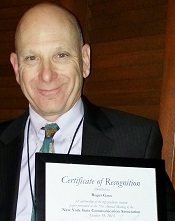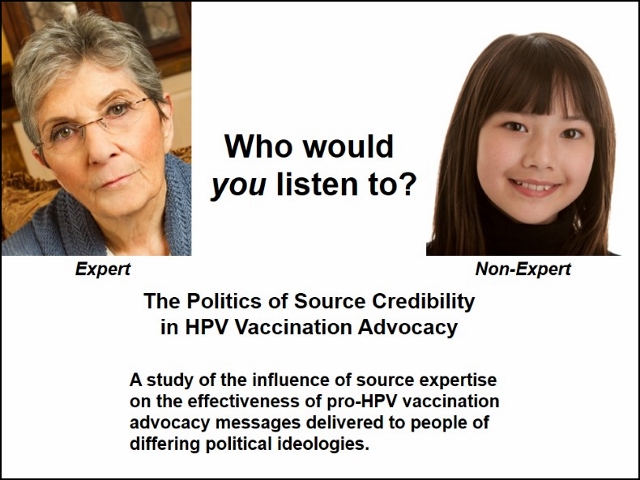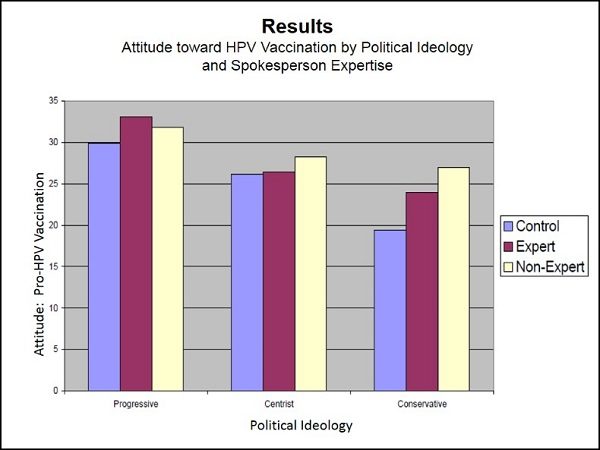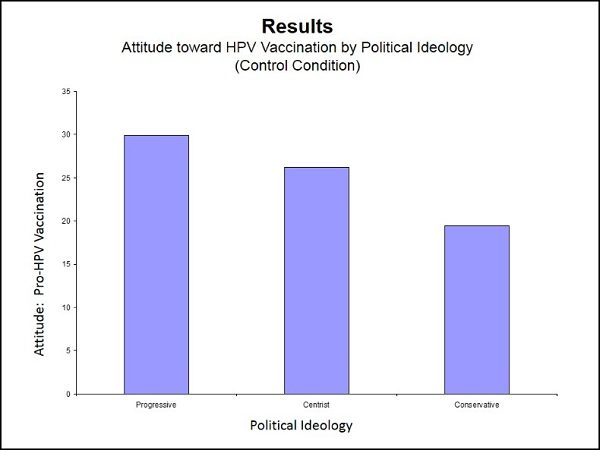Home » Marketing
Category Archives: Marketing
Marketing Objective #1
Marketing 101: To the Navel and Beyond
Whether you’re a for-profit business, a not-for-profit service provider, or a not-making-enough-profit individual, it’s a good idea to do a frequent review of your fundamental marketing objectives and your plans for achieving them.
I’m a fundamentalist at heart. Except when it comes to religion, I think learning and applying fundamental principles on a consistent basis is the surest route to the Promised Land.
(But let’s leave religion alone for now. It presents some interesting marketing challenges, and we can get into a discussion of the difference between fundamentalism and dogmatism, but let’s save it for another time.)
If we’re going to take the fundamentalist approach, let’s start with a basic definition of “the Marketing Concept.” For an individual or organization, it means developing your products and services (including your distribution, pricing and promotion strategies for those products and services) to satisfy the needs and wants of targeted customers as well as your own needs and wants.
The difficulty with fundamentalism is that the fundamentals are so, well…fundamental. They’re so basic that, like the concrete foundation of a building, they can get obscured by all the stuff we pile on top.
Goal #1: Survive and Thrive
To provide the best products and services for its customers and stakeholders, an organization first has to exist. And to provide livable wages and a nurturing environment for its staff members, it must continue to exist.
Customer focus is important, but an organization cannot long provide value to customers if its business plan, or lack thereof, involves killing itself and its staff members. Visit sitemap.
Fundamental #1: Our own wants and needs
Many of my colleagues and clients (mostly in the fields of healthcare and higher education) complain that, when it comes to developing marketing plans, a lot of the leadership decision-makers they work with never get beyond examining their own navels.
I’m not sure they’re even getting that far.
Most often, they’re distracted by their own products or services. They focus on “how can we sell this?” instead of “what does the organization want and need, and how can this new [thing, idea, direction] help us achieve our long-term objectives?”
Or they’re distracted by some new development in the marketplace: a new technology, a new government regulation, a new social media tool, a new competitor. And their response addresses the immediate opportunity or threat without addressing fundamental wants and needs.
Long vs Short
The problem often comes down to a conflict between short-term gain and long-term objectives. Unless an organization’s long-term objectives—those fundamental wants and needs—are clearly defined and consistently revisited, too many decisions will be made strictly on the basis of short-term gain under the assumption that any gain must be beneficial.
Firing half your staff will reduce costs and increase profits on a short-term basis, but it may not be a good decision in the long-term. For a hospital or a community college, there might be short-term gains achieved by adding a new 256-slice CT scanner to compete against that hospital in the next town, or building new dorms to compete against four-year colleges. But would those be the best capital investments if Fundamental #1 was consulted first?
Maybe so. But maybe no.
The Navel Battle
Marketing, according to the American Marketing Association, is all about developing mutually satisfying exchange relationships with customers. Most marketers focus most of their attention on learning all they can about how to satisfy their chosen customers, and rightly so. But many forget that adverb: “mutually.”
The more fully the exchange relationship satisfies both sides, the more successful it will be. Marketers who do not fully appreciate their own wants and needs can only achieve success by accident, and accidents do not tend to last very long.
It is tempting for leaders to insist their staff members focus on satisfying all their customers’ needs, but unless the organization addresses its own needs (and those of its staff members), no one will be satisfied in the long run.
Reducing Risky Behavior
Risk Communication Can Be Risky
Environmental Safety and Public Health Policy-Makers Often Make Matters Worse
Communication of science-based information to the general public…particularly health-related information…is a well-studied field.
This may be because it is so often done so poorly.
Many public behavior interventions, especially those based on intuition, “common sense,” political persuasion or religious belief, tend to focus on presenting a rational, logical argument for complying with a specific behavioral request.
Researcher Timothy D. Wilson cites “D.A.R.E.” and “Scared Straight” interventions…famous and widely adopted programs intended to reduce crime and drug use among young people…as examples of programs that “make perfect sense, but… are perfectly wrong, doing more harm than good. It is no exaggeration to say that commonsense interventions [such as these] have prolonged stress, raised the crime rate, increased drug use, made people unhappy, and even hastened their deaths.” (Source: Wilson, 2011, Redirect: The surprising new science of psychological change. New York: Little, Brown & Co.)
Unfortunately, this “boomerang effect” is too common in public policy communications. Public policy communicators would do well to read the government’s own manual on risk communication, which ought to be stapled to every keyboard in every PR department in every science, health and environmental organization in the English-speaking world.
Risk Is Attractive
Nike’s 5-minute animated World Cup commercial urges its audience to “Risk Everything,” basically because the safe route is boring. And clearly, there are a lot of risk-seekers out there.
While the animation and execution are exquisite, the storyline is predictable to the nth degree—but who cares? As an exercise in appealing to its targeted demographic: GOOOAAAAAALLLLLLLL!
The product shots are also very appealing. These are not the soccer cleats I wore in high school, and the shirts and shorts look as though world-cup-worthy pectorals, abs and glutes are included at no extra charge.
All this being said, the spot ought to be worrisome to conservatives, control freaks (including many sports coaches) and public health advocates. The reason it should be worrisome is not because of the spot’s likely influence on an easily-manipulated demographic—actually, soccer players are a rather stubborn lot. This spot is not going to change them in any way except maybe to increase their motivation to buy another pair of cleats.
No, the scarier scenario is that the spot is an accurate reflection of the risk-seeking ethos of an entire generation. In the spot’s storyline, risking everything is the only way to beat the practiced but predictable perfection of the clones (who could also be the minions of the Matrix, or the Man, or your parents).
But in real life, the associated behaviors are:
- Going for the low-percentage spectacular dunk rather than the safe but boring lay-up
- Riding the motorcycle without the helmet
- Not buckling those seat belts
- Not vaccinating your kids
- Not stopping to unroll that Trojan
- Not settling for the status quo
Small wonder so many campaigns aiming to reduce risky behaviors actually serve to increase them. Maybe the control freaks and health communicators would do better if they positioned those undesired behaviors as something other than risky.
How about stupid? Or shameful? Or embarrassing?
As Nike is trying to tell them, risky is just too attractive.
We may not pay attention to the data in front of us, but they do
Data Driven Marketing
Are we making our choices and decisions based on our own objective, rational, informed analysis of each situation?
Most of the time, probably not.
Here are links to a couple of interesting Ad Age articles that show what some marketers are paying attention to.
A case for responsive web design
In this article by Patrick Moorhead, shoppers who like to consult their smart phones about buying decisions are identified as more valuable than those who do their buying-decision-research at their desktops. BUT… not so much better as to suggest ignoring those desk-jockeys. (Like this one, for instance.)
All facts are not created equal
Are you driven by data? Or are you driven crazy by data? In this Kate Kaye interview with historian-turned-data-cruncher Kevin Lyons, it becomes clear that the ability to gather and present data is not sufficient to provide real value. Not when dealing with an exponential expansion of available data. The trick is finding the relevant data amongst all the irrelevancies and not-quite-relevancies. (Sounds like there is a lot of opportunity to fudge those numbers. Look for an up-coming post on “Lies, Damn Lies & Statistics.”)
The Politics of HPV Vaccination Advocacy
Who would YOU listen to?
A study of the influence of spokesperson expertise

My paper, “The politics of HPV vaccination advocacy: Effects of source expertise on the effectiveness of a pro-vaccine message,” was recently accepted for publication in the 71st Annual New York State Communication Association Conference Proceedings. The conference was held in Ellenville, NY, on October 18-20, 2013.
The paper received the conference’s award for Top Graduate Student Paper.
HPV (human papillomavirus) is a worldwide scourge that causes cervical cancer and thousands of deaths each year. Who do YOU think would be more influential in persuading people to support vaccination against HPV?
Most people would guess the authoritative-looking woman doctor on the left. After all, how much influence could a non-expert like the Middle School student on the right be expected to wield?
That was the focus of my study of spokesperson expertise.
Universal HPV vaccination would save more than 3,000 lives annually in the United States, and more than 350,000 worldwide. It makes sense. Its benefits seem almost inarguable. But there is a huge amount of opposition, largely distributed along political and ideological lines.
The intersection of health, science and politics
Mistrust and disbelief in evidence-based science and the recommendations of scientists are widespread and distributed along partisan lines. It is hard to prove any immediate life-and-death consequences to rejection of evolution or denial of the possibility of human agency in climate change. But with HPV and cervical cancer, the consequences are clear, present and immediate. We can document that partisan opposition to HPV vaccination is killing people right now.
The results of my study suggest that people who are inclined to oppose HPV vaccination are more likely to listen to and be influenced by pro-vaccination messages from an obviously non-expert spokesperson (in this study, an innocent-looking middle school student) than from an expert (in this study, an authoritative-looking woman doctor).
Three test groups: Expert, Non-Expert & Control
In my study, 474 adults were randomly divided into three groups. One group was instructed to read some basic, neutral information about the HPV virus and a pro-vaccination advocacy message attributed to the woman doctor.
A second group was instructed to read the same basic information about the HPV virus and the same pro-vaccination advocacy message, but for this group the message was attributed to the middle school student.
The third group (the control group) read the same basic information about the HPV virus, but received no advocacy message. Members of all three groups were also instructed to rate themselves politically as either Progressive, Centrist or Conservative.
After completing their reading assignments, the subjects were surveyed about their attitudes toward HPV vaccination.
The attitude-scores of the control group (the ones who read only basic information but received no advocacy message) showed how attitudes toward HPV vaccination are skewed along partisan political lines. The more conservative the individual, the more opposed to HPV vaccination that person was likely to be.

Displaying the results for all three groups side-by-side (see chart below), it is clear that Centrists and Conservatives—those more likely to be opposed to vaccination—are more positively influenced by the Non-Expert spokesperson than the Expert.
For both Centrists and Conservatives, attitudes among those who read the advocacy message from the Non-Expert were significantly more positive than among those who received no advocacy message. There was no such significant difference in attitudes of those who read the advocacy message attributed to the Expert.

With Centrists, in fact, attitudes toward vaccination among those who received the advocacy message delivered by the Expert were virtually identical to those who received no advocacy message at all.
Among Progressives — who tend to favor HPV vaccination to begin with — attitudes toward HPV vaccination were more more positively influenced by the Expert than the Non-Expert.
Since virtually all pro-vaccination campaigns are spearheaded by people who favor vaccination, it seems likely that the tendency to rely on expert authorities as public advocates for vaccination may be the result of unexamined and untested assumptions that what influences Progressives will influence everyone. The power of spokesperson expertise may be overblown.
Overall, these results suggest that HPV vaccination advocates would be more successful if they would enlist more non-expert spokespeople in their public information efforts. The results also suggest that information about scientific and politically charged subjects might receive greater attention from doubters if the information is delivered by spokespeople who are not immediately identifiable as expert advocates for the other side.
Someone seeing the serious-looking doctor knows another authoritative persuasive argument is coming and tunes out before any persuasion can happen. With the non-threatening middle school student, there is more chance that the persuasive message will be heard.
Some persuasion is more effective than none!
A follow-up study suggested some interesting reasons for these results!
Reverse Psychology?
Yes, apparently you can actually get people to do something (or maybe NOT do something) by encouraging them to do the opposite.
There is a growing body of research that shows people can be discouraged from doing things they find pleasurable by paying them to do those things.
Theorists believe it demonstrates one of the major differences between intrinsic and extrinsic motivation.
When people do things because those actions give them pleasure or fulfillment, their motivations are intrinsic. Performing the actions becomes intertwined with their sense of identity: they do those things because of who they are.
When people do things because an outside force is compelling them to take those actions – by paying them, or forcing them or shaming them into it – their motivations are extrinsic. There is not the same kind of connection with the sense of identity.
With extrinsic motivation, there is often an undercurrent of resentment – psychological reactance – and a lost sense of freedom that can sap the pleasure out of an action that may have once been performed for fun. Extrinsic motivation tends to dampen and can even extinguish intrinsic motivation.
Putting this strategy into practice may be difficult, however. The chances of convincing any organization that must answer to public opinion to actually use this human tendency in an intentional way is pretty slim.
For instance, I don’t think we can convince the government that a good way to combat obesity would be to pay fat people to eat more.
But what about gun control?
Given the climate in the Republican-held House of Representatives, we are far more likely to pass a bill offering people financial incentives to own as many guns as possible than to pass a bill restricting gun rights in any way.
If we could get the government (i.e., the hated government, from which no good can ever come) to pay people to own guns, maybe this would work better to discourage gun ownership than trying to legislatively take away people’s right to bear arms.
By the way, on the subject of gun control, people on both sides of the debate could gain additional perspective on the matter by reading the classic science fiction novella, “The Weapon Shops of Isher,” by A.E. van Vogt.
Lost on the information superhighway?
Writing for the web is not like writing for an ad
Your objective is not to intrude on people’s lives and attract the attention of people who are busy doing something else.
In web writing, your audience is actually busy looking for you.
Here’s a little driving analogy. Suppose you are driving (without a GPS device) on a busy superhighway through a large city, looking for the proper exit to get to the Museum of Website Design.
You’re not going to care about the sign that says “One of America’s Great Cities,” or the one that says “GAS FOOD LODGING.”
You’re not going to be interested in the billboards advertising the city hospital’s new Cyberknife cancer treatments, or the neon signs giving the latest prices for gasoline, or the blimp hovering above you with the picture of Snoopy on it.
But if you see a billboard with the words “Museum Exits” on it, you’ll be all over it.
If it turns out that the sign is for some other museum, you will be disappointed, and probably a little frustrated. You’ll be less trusting of future “Museum Exits” signs, but you’ll still be looking for them.
This is same mindset of most users of the Internet. They are traveling at high speed, looking for specific information, and not interested in all those unrelated bits of information and advertising that pop up. They appreciate clarity and brevity. They are frustrated by distractions and disruptions.
Their eyes are attracted to any clues related to the object of their search. And they ignore everything else.
Reward the successful searcher
If you are lucky enough to attract a searching set of eyes to your website, don’t abuse them with distracting hokum and overlong hunks of mind-numbing verbiage.
Give them clear, quick links to the real pieces of information they are looking for. Make the information easy to find and easy to understand.
Be brief. Be clear. Make it easy to find out more.
Make your content easier to read, and you will get more readers. Make it easier for your readers to place an order, and you will get more orders.
So you want to be a writer?
Have you ever dreamed about the freelance writer’s romantic, adventurous, carefree existence? Me, too.
But like in that movie, Nightmare on Elm Street, be careful what you dream. It might just come true.
Now before we get into all that Freudian stuff, let me get a few things answered for you right away. There are people out there making a good living as freelance writers. You don’t have to live in New York, Chicago or Los Angeles. And you can sleep late without horrible moral consequences. At least I think you can. I haven’t really tried it.
If you really think you want to go down that road, here’s a quick overview of what it’s like to be a freelance writer out in the great wide world of mortgage payments, health insurance premiums, telephone bills and estimated tax.
First, let me tell you a little bit about myself. In addition to teaching a few college courses, I am a full-time professional freelance writer. I live in a big old house next to a cornfield about 20 miles southeast of Albany, NY, in a rural county known for fox hunting, horse farms and genteel poverty. I make enough money to pay for my mortgage, my son’s college loans, gasoline to run two cars and a riding mower, food for the table, and thanks to President Obama’s much-maligned Affordable Care Act, an only moderately expensive bare-bones health insurance policy.
In the past few years, people have paid me to go to places like the outer banks of North Carolina, Bermuda, British Columbia, and scenic Schenectady, New York, to help them get things written.
Right now, I am working on four books, a fund-raising campaign for a health care services organization, two sales training videos, a medical services brochure, and about 10 articles for various online and print magazines.
So…you’re thinking to yourself, “Cool! If this dweeb can do it, so can I!”
Well, that may or may not be true. But here’s the first important question:
Why would you want to?
Understand this: Writing is the loneliest profession on the face of the Earth. Even lighthouse keepers can have company while they work. They can play the radio. They can listen to the news. They can share the moment.
Writers do what they do alone. Even those of us who are disciplined enough to be able to write when someone else is in the room have to be able to isolate ourselves in our minds. There’s no teamwork. There’s no camaraderie. There’s just you and the empty page. Of course, these days, it’s the empty screen.
And when you’ve written something, you have to let it go. You can’t expect any immediate gratification from it. You can’t eat it or wear it. You can’t show it to your friends and have them go, “Oh wow that’s beautiful” like you could with a painting or a sculpture. They have to read it first.
And then, when it comes to what you have written, everyone is qualified to be a critic. Everyone you know speaks English. Everyone with a pencil is going to have a suggestion for how you should have written it. And by the way, there’s a typo on the first page, and whatever your position on serial commas, most people don’t agree.
So you still want to write for a living?
Mark Twain once said, “If you want to be a writer, write. And keep writing until someone’s willing to pay you for it.”
Hey, it worked for me.
1. HOW TO GET STARTED
Gather a portfolio of your writing, aimed at the audiences you want to write for. If you want to write software documentation, write some software documentation. If you want to write TV commercials, write some of those.
That way, when people ask to see samples of your work—and they will—you’ll have something to show them that they can relate to.
When I went looking for my first writing job, I carried around a pile of poems, essays and short stories. The guy at the TV station was polite enough to pretend to look at them before turning me down. The guy at the ad agency just said, “You got to be kidding.”
Buy a book on freelance writing. There are a lot of them, and most of them are full of good advice. Learn to make your writing look as though it was written by a professional.
A good beginner’s strategy is to learn how to write a competent news release, and then volunteer your services to charitable organizations. This is a good way to get some experience and to prove to yourself that you can actually get your writing published.
2. GET A DAY JOB
You’ve got to eat. The best training to be a freelance writer is to write professionally. Failing that, write for free and do something else to live. My first writing job was for a weekly newspaper. I worked for free, although the editor kept promising me a few bucks. But I wrote things that got published every week. Meanwhile, I worked in an engraving shop for spending money.
After college, I worked as a Probation Officer for seven years and wrote hundreds of case histories based on investigations, but that didn’t really prepare me for freelancing. I learned that lesson the hard way, after I quit to become a freelance writer. I moved to a cabin in the woods outside the little town of Woolwich, Maine. My rent was 50 bucks a month. And I did nothing but write for six months. After gathering a huge pile of rejection slips from most of the nation’s magazines and book publishers, I finally sold a short story to Mike Shayne’s Mystery Magazine, a national publication. It was a story about a quirky town constable in an isolated community in Maine. Along with the notice of publication, the magazine sent me a check for 15 bucks.
I had spent more than that on postage.
The next day I went out and found a day job. I kept writing on the side, and eventually sold a number of feature articles to a local weekly newspaper. Somebody in the ad agency business saw some of the articles and offered me a job as a copywriter-trainee. He paid me very little at first, but however much it was, I wasn’t worth it. It took years before I understood that my job as a writer was to help consumers satisfy their objectives, not impress them with my cleverness.
3. BE USER FRIENDLY
Your writing should be accessible to the people you are writing for. Spoil them. Make every sentence so clear that your audience can’t possibly miss your point. Include facts and opinions so interesting that your audience will be eager to turn the page without falling asleep. Make your writing as short as possible, so you won’t scare your audience away from the sheer weight of type on the page. And don’t try to impress anyone with how clever you are. Your goal should be to be invisible—a ninja writer.
The same principle applies to your approach to the people you work for. Be user-friendly and accessible. Prima donnas don’t get a lot of repeat assignments. Revisions are an inevitable fact of life in the writing business. Don’t argue with them. Expect them, listen to them, cherish them.
The easier you are to work with, the more eager people will be to have you write for them again and again. There may be a lot of people in the world, but you can’t afford to work for all of them just once.
4. HOW TO FIND WORK
Be creative. Whether you want a job or freelance assignments, put a customizable portfolio together. It helps to have a portfolio to brandish while you present yourself, but remember—you are your most important product. Prospective employers and clients want to know if you can help them do their jobs more easily and more profitably, if you can be trusted, and if you would be pleasant to work with.
There is no law that says you even have to open your portfolio during a get-acquainted interview. Your goal should be to start building a relationship and to walk away with an assignment—even an unpaid one—as an opportunity to prove yourself worthy of additional assignments.
The secret to success as a freelance writer is establishing a roster of clients who give you multiple assignments, so you should relish every opportunity to prove your mettle.
Places to look for paying work:
Ad agencies, PR agencies, radio stations, software companies, website designers, technology-based companies, professional associations, engineering companies, construction companies.
Places to look for volunteer experience:
Human services agencies, hospitals, charitable organizations, nursing homes, colleges and universities, youth sports and recreation organizations.

A final bit of advice: Put your ass in that chair
Google all the meanings of Sitzfleisch. Whether you want to write for a living or for your own self-gratification, the important verb is the fifth word in this sentence. The only way to get better at it is by doing it. So get yourself a sturdy and ergonomic but not too comfortable chair, and start molding your nether regions to it. And god help you.
Evolution & Marketing
What is the “marketing concept”?
One of my students emailed me with a question about a working definition of “the marketing concept” for a homework assignment. Her textbook had not arrived yet, and she wanted to know whether the WikiAnswers discussion she had found online would be appropriate.
After looking through my collection of marketing textbooks and comparing their definitions of “the marketing concept” with the online search-engine results, a few thoughts occurred to me.
The phrase “the marketing concept” is incomplete. It needs a qualifying prepositional explanation—something like, “the marketing concept of business,” or, “the marketing concept of exchange facilitation.”
And the reason for that need is that, as it is used in all these textbook and online discussions, “the marketing concept” can be properly understood only in the context of its evolution from earlier concepts of doing business or facilitating exchange.
The standard story of this evolution goes something like this:
The Product Concept (of Doing Business) – made by hand, often by experts using proprietary methods, products are relatively scarce. Demand far exceeds supply, and virtually all functional products will be sold. The more products you can make, the better for your business. This “concept” was dominant from the dawn of time until very recently.
The Sales Concept – the industrial revolution and mass production made it possible, for the first time in human history, for businesses to supply enough products to meet or exceed demand. To succeed in business, you now needed to be able to sell your products and to be able to charge enough to make a profit on them. Most of the textbooks and online discussions suggest that this “concept” held its position of dominance for only a tiny slice of the human timeline—variously described as from the 1920s or ‘30s or ’60s until the day before the authors wrote their books.
The Marketing Concept – here, finally, we have reached the pinnacle of human perfection with a business concept in which product producers compete with one another to satisfy the wants and needs of customers. Those who offer the greatest customer satisfaction will achieve the greatest success. Our most successful businesses now focus their product development, delivery, pricing and promotional efforts on building a reliable, friendly image.
This is done by conventional ads, but more so through social media with external companies that provide youtube views and likes like any other online product. On social media the lines between customer and producer become blurred and there is an imitation of a one-on-one, peer-to-peer relationship. Of course this is done rather cynically on the big companies’ part. They have zero intentions of becoming anyone’s friend or at least that is only a means to the final goal, which is building satisfying exchange relationships with a loyal customer base—and long-term success requires nurturing and growing that customer base.
So How Smart Are We?
According to our marketing experts, this “marketing concept” of doing business—this advanced approach to developing exchange relationships—has been alive in the world for a few decades at most.
But vanity is the nature of humanity. We consider ourselves the most intelligent, advanced and successful life-form to ever inhabit the Earth – this despite the evidence that Neanderthals had larger brains, and yet died out; that insects and bacteria outnumber us by multiplication factors in the millions; and that a strong argument can be made that the dominant life-form on Earth is the virus.
Consider the orchid, of which there are thousands of successful varieties, most considered brainless. For millions of years, orchids have been building and satisfying loyal customer bases using all the methods of humanity’s most advanced business concept:
Product offering: sweet, satisfying and health-promoting nectar—just what a hungry insect and/or bird might need.
Distribution scheme: self-service. We have locations in your neighborhood, and we’re open for business whenever you’re hungry.
Price: so much to offer, so little weight to bear. All we ask is that you carry our pollen to other orchids.
Promotion: you can see our distinct colors and shapes from meters away, and you can smell our unmistakable aroma for hundreds of meters. And when you get here, we’ll make it worth the trip. Come back often, and be sure to tell your friends!
References
“What is the evolution of the marketing concept” (n.d.) Accessed 7/9/14 at
http://wiki.answers.com/Q/What_is_the_evolution_of_the_marketing_concept
Pride, W; Ferrell, O (2009) Marketing Express. Mason, OH: South-Western, p. 7-12.
White Orchid Image: White orchid blossom photo taken at Phipps Conservatory in Pittsburgh in 2005. Accessed 7/9/14 at http://en.wikipedia.org/wiki/File:White_Orchid.jpg
Tiger Orchid Image: Found in one of the Pictures folders on my hard drive.
Train Your Auto Pilot
The way even the most complicated software works is a bit at a time. Or a byte. Programs are made up of sequences of routines, which are made up of sub-routines, and the finished programs join them all together.
My son taught himself to play the impossibly fast passages in Mozart’s Clarinet Quintet by breaking the hard parts down into small groups of three or four notes, and practicing the small groups until they were mastered. This is not dissimilar to the routines and sub-routines found in programming. He joined the groups of notes together, slowly, until they could be played more quickly. Eventually he joined all the groups together into an astonishing performance.
He learned this technique of training his Auto Pilot with the help of a succession of inspired music teachers. Some of them called it, “Building muscle memory.”
Actually, I have heard this “muscle memory” explanation a lot, and it bothers me. Last I heard, muscles don’t have memories, but they are controlled by something that does—the brain.
I think there may be an unconscious urge to shy away from thinking about the things the brain may be doing that we are not aware of. (Maybe the Auto Pilot wants to stay hidden?) I hear other aspects of Auto Pilot behavior chalked up to simply being habits, as if a habit is not something our brain learns to do while we are not consciously trying to learn anything.
The part and/or function of the brain I call the Auto Pilot (and that T.D. Wilson, in Strangers to Ourselves, calls “the adaptive unconscious”) is observing and learning constantly, and using what it learns to predict what will happen next so that it can direct our bodies to take appropriate actions. These actions are not limited to simple sequences of muscle movements, but can include complex behavior patterns.
So, for instance, when we are crossing the street, our Auto Pilot notices how close we are to the curb so we don’t trip; notices the puddle so we avoid it; notices the car that is about to hit the puddle and splash cold, muddy water near us—and before the splash ever happens, we are already back-pedaling to stay dry.
The Auto Pilot doesn’t have eyes in the back of our head, however, so when the bicyclist who is coming up behind us shouts angrily at us for backing up unexpectedly into his path, it registers surprise – and so do we, swiveling our heads to see where the biker is and leaping quickly out of his path, and maybe flipping him the bird while we’re at it.
The Auto Pilot is always learning, and always making predictions. If reality falls in line with our Auto Pilot expectations, we can go humming along merrily through the day, not having our attention directed to unexpected bikers and other things that may surprise us. And this, I believe, is our usual state of affairs: busy paying attention to something else—a phone conversation, a memory, a worry—while cruising on Auto Pilot.
The default control of our Auto Pilot and this learning-predicting-surprising sequence has tremendous implications for marketers, especially advertisers and brand managers. Here are three quick take-aways for them:
(1) Advertisers who want to get their advertising noticed would do well to find ways to surprise the Auto Pilot.
(2) To build brand equity, a brand manager would do well to try to teach the Auto Pilot to predict positive experiences in connection with the brand.
(3) If you have a dominant position in the marketplace, avoid surprises and don’t defy any expectations. Just show a smiling kid eating your Happy Meal and make sure the Drive-Thru is open.
Living on Auto Pilot
A few years ago, the company I was working for moved its offices from Troy NY to Albany NY.
To get to the new offices, I needed to stay on Route I-90 all the way to exit 1 (I-87) instead of getting off at exit 7 (I-787), the turn-off for Troy, which I had been taking every day for several years.
In the first week after the move, I got off at the wrong exit four out of five times.
I got off at exit 7 three times, heading to my old offices. The other wrong time, I resisted the temptation to get off at exit 7, but still screwed up. Instead of staying on I-90 all the way to exit 1, I got off at exit 2 and headed toward a popular shopping mall I have visited many times.
In describing my navigation difficulties to my marketing class that week, I claimed it was evidence that people spend much of their supposedly conscious lives operating on Auto Pilot.
The second week, I only took the wrong turn twice. (Apparently I was still, even at my advanced age, capable of learning.) The following week, I again found myself traveling north on Route 787 when I should have been going west on Route I-90, and a few conceptual puzzle-pieces snapped into place.
The way our brains learn, consciously and unconsciously, has a profound influence on the whole spectrum of human behaviors, and every part of this puzzle should be of interest to people interested in marketing, advertising and persuasion. I could write about this for the next 50 years without running out of ways to entertain myself.
And I plan to.
I believe we spend most of our conscious hours engrossed in one or another kind of thought-activity while leaving control of our moment-to-moment actions on auto pilot. I don’t think we could survive if we didn’t.
Our auto pilots are so unobtrusive that few people ever give them a thought. Even when they lead people astray, as mine did when it took me to Troy instead of Albany, it is often just chalked up to “not paying attention.”
That’s another major issue for my next 50 years: who (or what) decides what I am going to pay attention to? How much of that decision do I leave up to my auto pilot?
The more I reflect on how much of my moment-to-moment behavior is under my conscious control versus on auto pilot, the more I realize that I am not just mostly ON auto pilot… I mostly AM my auto pilot.
As I understand things now, the person I present to the world is largely the stuff my auto pilot does automatically while I am thinking about something else.
That doesn’t mean my life is necessarily out of control—although if I don’t pay attention to the care and feeding of my auto pilot, it could well turn out that way. In fact, some people achieve great success through careful, systematic interaction with their auto pilots.
We all start our lives teaching our auto pilots the ropes of human living—how to relate the perceptions of our senses to the world around us. How to walk and talk and understand language. How to hold our forks and chew our food. How to find our way home. But we do this unconsciously. We don’t even need to know our auto pilots exist.
World-class musicians are one group of people who achieve success by learning how to consciously train their auto pilots. Elite athletes are another.
They have discovered that through systematic practice, their auto pilots can learn to perform incredibly complex behavioral routines that no one could hope to accomplish through a process of conscious decision-making.
Imagine asking someone who had never seen a piano to sight-read a Chopin waltz. Imagine asking a beginning skier to try negotiating the Olympic Giant Slalom course. These are things that can only be accomplished with highly trained auto pilots.
To be fully functioning humans, we owe it to ourselves to learn all we can about our auto pilots, and what we can do to help our unconscious behavior controllers perform in ways that can better accomplish our conscious objectives.
And the same goes for us as marketers. We need to learn how to train our customers’ auto pilots too.
SUGGESTED READING:
For more insights into the ways our auto pilots shape how we behave and what we pay attention to, here’s a reference I cannot recommend strongly enough: Wilson, T.D. (2002) Strangers to ourselves: Discovering the adaptive unconscious. Cambridge, MA: Belknap Press of Harvard University.













